Buttercup flowers, also known as Ranunculus, are vivid and appealing. These are Ranunculaceae and occur in yellow, orange, pink, red, and white. Buttercup flowers have been employed in many societies throughout history, each having its own meanings and symbols. In this blog post, we will explore the different meanings and symbolism associated with buttercup flowers.
Buttercup Flower Meaning : Buttercup flower symbolizes pleasure, Enjoyment, Happiness, Modesty, Youth, Friendship, Companionship and Innocence. They are often associated with Purity, Humbleness, Neatness and Humility. The Buttercup is often associated with youth, purity, and innocence because to its intimate affiliation with children. These flowers are considered to symbolise pleasure, happiness, and good health, making them ideal for many occasions.
The Buttercup usually represents growth, youth, health. Certain Buttercup species are hazardous and should not be consumed or used in herbal medicines, it is crucial to remember.
Perennial buttercup blooms may reach heights of 6-12 inches (15-30 cm) and widths of 6-12 inches (15-30 cm). They often appear in borders, rock gardens, pots, and as cut flowers because to their slow growth rate. Buttercup flowers need to be split every two to three years and deadheaded often to maintain their vitality.
Buttercup flowers like full sun to partial shade, well-drained soil with a pH range of 6.0 to 7.0, and a moisture level of medium to high. Regular monitoring is advised to avoid these pests and illnesses since they are vulnerable to powdery mildew, rust, and aphids.
The Tall Buttercup (Ranunculus acris L.), the Early Buttercup (Ranunculus fascicularis), and the Persian Buttercup are just a few of the numerous types of Buttercup blooms that are available (Ranunculus asiaticus). Each species has certain traits and needs for expansion.
Shop artificial buttercup flowers from here – Shop from amazon.
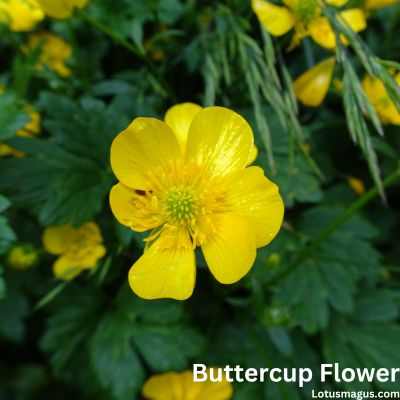
| Property | Description |
|---|---|
| Scientific name | Ranunculus spp. |
| Common name | Buttercup Flower |
| Family | Ranunculaceae |
| Color | Yellow, white, pink, red, orange |
| Bloom time | Late spring to early summer |
| Sun exposure | Full sun to partial shade |
| Soil type | Well-drained soil |
| Soil pH | Slightly acidic to neutral (pH 6.0-7.0) |
| Soil moisture | Moist to medium |
| Height | 6-12 inches (15-30 cm) |
| Spread | 6-12 inches (15-30 cm) |
| Growth rate | Moderate |
| Uses | Borders, rock gardens, containers, cut flowers |
| Maintenance | Deadhead regularly to encourage continuous blooming. Divide every 2-3 years to maintain vigor. |
| Pests and diseases | Susceptible to powdery mildew, rust, and aphids. |
What is a Buttercup flower?
Ranunculus, or buttercup flowers, is a genus of herbaceous flowering plants in the Ranunculaceae family with roughly 300 species. These beautiful flowers are noted for their brilliant, yellow petals and may be seen blooming wild in many areas, especially in the spring. Buttercups are opportunistic colonizers and blossom throughout summer.
Buttercups are native to Europe, Asia, and North America and occur in a number of varieties, including the Common Buttercup (Ranunculus repens), Persian Buttercup (Ranunculus asiaticus), and White Buttercup (Ranunculus acris). The blooms may be regular or irregular, with 3 to 15 sepals that are typically colored like petals and 0 to 23 petals.
Buttercups are usually connected with growth, youth, good health, and attractiveness in floral language. These flowers have therapeutic characteristics and have been used for generations to alleviate fever, inflammation, and discomfort.
Buttercups contain the deadly glycoside ranunculin, which when crushed or eaten turns into the dangerous chemical protoanemonin. The blooms are safe to handle and offer beauty to gardens and floral displays.
What is the negative meaning of buttercup flower?
Buttercup flower negative meaning is Ungratefulness, Immaturity, Disloyalty, difficulties in friendship and wrong behavior. Other flowers that represents negativity is Mandevilla , Petunia, Spider Lily, Crown-of-thorns, Amaranthus and Yellow Hyacinth. Greek mythology tells the tale of Anemone, a lovely lady who was transformed into a flower by the gods. Anemone had a mortal love interest called Adonis; however, after he passed away, she was chastised by the gods for her refusal to let him go. The anemone flower hence came to represent unrequited love and rejection.
Similarly, because of its connection to the Greek story of Eros and Psyche, buttercups have come to be linked with unfavorable connotations. Eros was a deity of love who, according to myth, fell in love with Psyche, a human woman. Eros chastised Psyche for betraying him by leaving her because of her curiosity. Buttercup flowers have come to represent Psyche’s treachery and unfaithfulness since it is stated that they were born from her tears.
In addition to having a bad connotation, buttercup blooms are poisonous to cattle and, if consumed in high amounts, may result in major health issues. Their unfavorable reputation is partly a result of this harmful behavior.
Buttercup flowers do have certain redeeming attributes, despite their bad reputation. They may provide a sense of joy to any garden or meadow since they are stunning and vibrant. In certain traditions, buttercup blooms are also connected to luck and pleasure.
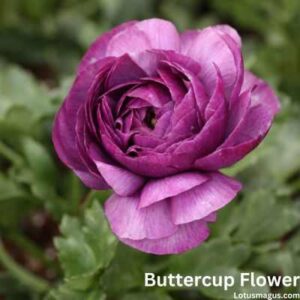
What does the buttercup flower mean in love?
Buttercup flower are symbolic of happiness, Bliss, Gladness, Purity, innocence, and love. They also represent neatness, Jubilation, humility, peace, beauty, youthfulness and good luck.
Because of its cheery look and ability to make people happy, it is often believed that the Buttercup signifies joy. Due of its delicate petals and modest character, it also represents purity and innocence. The representation of innocence in myths and stories of love and loss in many civilizations, such as the Persian Empire and Native American mythology, is often tied to the symbolism of innocence.
Another quality associated with the Buttercup is friendship, since its presence may represent camaraderie and wholesome connections. In addition, the flower is considered to represent humility and neatness. The Buttercup’s tidy petals have made it associated with cleanliness, and its subdued form emphasizes humility.
The Buttercup flower symbolizes attractiveness and charm in romantic situations. It is a common option for romantic gestures because of its sunny hue and delicate petals, which arouse thoughts of romance and devotion. Its use in myths and stories about emotions and relationships serves to emphasize this link with love even more.
The Buttercup flower is a sign of optimism and hope since it has also been associated with the concepts of growth and fresh beginnings. Its presence denotes the possibility of fresh chances and encounters, especially when it comes to issues of the heart.
Buttercup Flower Meaning
Buttercup flower symbolizes pleasure, Enjoyment, Happiness, Modesty, Youth, Friendship, Companionship and Innocence. They are often associated with Purity, Humbleness, Neatness and Humility. The Buttercup is often associated with youth, purity, and innocence because to its intimate affiliation with children. These flowers are considered to symbolise pleasure, happiness, and good health, making them ideal for many occasions.
Buttercups’ brilliant yellow hue also symbolizes optimism, cheerfulness, and warmth, making them ideal mood-lifters.The Buttercup symbolizes development, youth, health, and appeal in floral language. The Persian Buttercup symbolizes happiness, benevolence, and prosperity.
According to Victorian Flower Language, Buttercups represent humility and neatness, which are mirrored in the flower’s delicate lines and carefully ordered petals. Buttercups are lucky and charming in several cultures, making them popular presents and decorations.
The Buttercup was linked with several gods and goddesses in ancient mythology, and its meaning varied from culture to culture. In Greek mythology, the Buttercup was associated with the beautiful and charming goddess Hera. In Norse mythology, the Buttercup protected humans against bad spirits and disaster.
Buttercup Flower Symbolism
Buttercup flowers are distinguished by their brilliant yellow hue and glossy petals. These flowers have acquired a variety of meanings and symbolisms throughout time, which makes them appealing in diverse cultures and contexts. Some of the key symbolisms of Buttercup flowers include:
Pleasure: The sense of fulfillment, happiness, and joy that one encounters is the basis for the symbolism of pleasure in Buttercup flowers. The buttercup flower’s yellow petals stand in for the sun and the cozy, comforting sentiments that are associated with sunlight. The flower represents the happiness and delight that result from encountering good feelings and circumstances in life. The Buttercup flower serves as a reminder to appreciate every moment and to enjoy life’s simple pleasures.
Enjoyment: Another symbolism associated with buttercup flowers is the concept of enjoyment, representing the act of taking pleasure, delight, and happiness in one’s life. The flower serves as a reminder to celebrate and value the good things in life and to find pleasure in the little things. The Buttercup flower is a representation of how important it is to find joy in every encounter and to take pleasure in life.
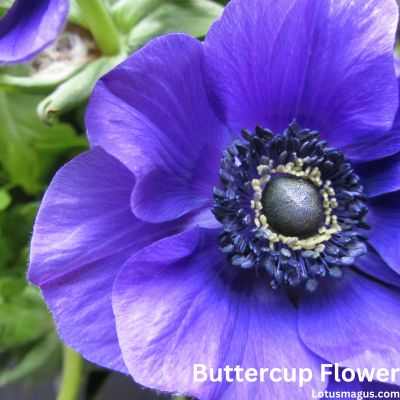
Happiness: Buttercup flowers indicate happiness, representing the pleasure, contentment, and satisfaction one feels when things go well. The buttercup flower’s vibrant yellow petals are linked to happiness and good vibes. The flower represents finding happiness in life and enjoying it to the utmost. Happiness is within our grasp if we choose positivity and optimism, as the Buttercup flower serves as a reminder.
Modesty: The symbolism of modesty in buttercup flowers represents the trait of being humble, meek, and unpretentious. The flower represents the value of being grounded and accepting one’s capabilities and accomplishments without pride or conceit. The Buttercup flower serves as a gentle reminder to be happy with what we have and to express gratitude for all that we have. It stands for the virtue of modesty and the need of living a humble life.
Humble: It stands for the virtue of modesty and the need of living a humble life. Buttercup flowers are often connected with youth, representing the vigor, vitality, and enthusiasm of adolescence. The Buttercup flower’s bright, cheery petals represent youth’s pleasures and experiences. The flower represents the value of maintaining youth and embracing everything that is good about youth. The Buttercup flower serves as a reminder to live fully and to appreciate each day.
Friendship: Buttercup flower symbolism represents the value of comradery, togetherness, and unity in friendship. The flower serves as a reminder of the importance of having dependable and encouraging companions in one’s life. The Buttercup flower represents the relationship between two individuals who have a close relationship and who support one another no matter what. The flower represents the rewards and difficulties of friendship.
Companionship: Buttercup flowers also indicate companionship, representing the relationship between two individuals who are deeply connected to one another and who support one another through difficult times in life. The flower serves as a reminder of how important it is to have a companion through the ups and downs of life. The Buttercup flower represents the importance of having a close friend or family member to depend on and the power that comes from having a strong social support system.
Innocence: Buttercups are a representation of innocence, representing the flower’s purity, simplicity, and unadulterated nature. The flower represents the significance of preserving one’s innocence and purity of heart. The buttercup flower serves as a symbol of the importance of appreciating the little pleasures in life and approaching life with a feeling of wonder and innocence.
Purity: Buttercup flowers indicate purity, representing the flower’s perfection, holiness, and cleanliness. The flower represents the significance of living a moral and upright life. a Buttercup
History of Buttercup Flower
The history of the buttercup flower is extensive and goes back thousands of years. It is said to have its roots in Iran, Turkey, and Greece. The flower was introduced to North America and is now widespread throughout the country. A few varieties of buttercup blooms may be found throughout Asia. Maybe as a result of the fact that many of the blooms grow close to water, the name “ranunculus” is derived from the Latin word for “small frog.”
Buttercup flowers have been a part of European tradition for generations, yet they weren’t originally domesticated until the 16th century. From ancient times, the flower has been employed in several therapeutic procedures, including Ayurveda and traditional Chinese medicine.
The buttercup was a symbol of the wine deity Dionysus in ancient Greece. The earth where his drink had fallen was said to have sprouted the yellow flowers. The buttercup was utilized as a decoration for dwellings around the summer solstice because it was revered in Celtic mythology as a representation of the sun. The buttercup was employed in medieval times as a charm against bad spirits and a treatment for a number of diseases.
In several civilizations, the buttercup flower has varied metaphorical significance. The flower is often connected with positive traits like enjoyment, pleasure, happiness, camaraderie, youth, innocence, purity, modesty, and charm. The buttercup flower is regarded as a lucky flower in several cultures.
Buttercup Flower Origin
Some sites, like FloraQueen, claim that Persia, Greece, and Turkey are where the buttercup flower is said to have its origin. Afterwards it was transferred to North America, where it is currently widespread. A few regions of Asia are also home to the flower. As many of the blooms were discovered close to water, it’s possible that the name “ranunculus” came from the Latin word for “small frog.”
During history, many different societies have valued the buttercup flower. The buttercup represents allure and appeal in floriography, the language of flowers. The flower is also linked to friendliness, modesty, orderliness, and purity, according to Flower Fantastic. The white buttercup flower also stands for charm, purity, innocence, grace, and elegance.
The buttercup flower is small and fragile, with petals that are different shades of yellow, orange, pink, and red. Due of the flower’s vibrant and cheery look, spring and summer are frequently linked with them. The buttercup flower is often used with other flowers like roses, tulips, and peonies in floral arrangements, notably wedding bouquets.
Buttercup flower Colors Symbolism
Buttercup flowers come in a variety of colors, including gold, orange, lavender pink, white, yellow, red, and salmon. Each color variation of the buttercup flower carries its own symbolism and meaning:
Orange buttercup flower meaning
Orange buttercup flowers symbolize humility, innocence, fidelity, gentleness, simplicity and purity. When someone or something is going through a difficult period or going through a significant life transition, they may be used to show support and excitement. Perfect for expressing support, these flowers.

White buttercup flower meaning
White buttercup flowers symbolize humility, innocence, fidelity, gentleness, simplicity and purity. They may be used to communicate sincerity, respect, and honesty. White buttercups may also be used to commemorate new beginnings like the arrival of a child or the start of a new employment.
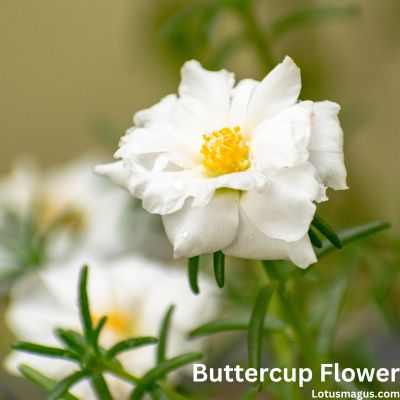
Pink buttercup flower meaning
Pink buttercup flowers symbolize Affection, love, Admiration, compassion, glamour and romance. These are often presented as gifts to show respect, thanks, and appreciation for someone special. For commemorating a wedding anniversary or Valentine’s Day, pink buttercups are ideal.

Salmon buttercup flower meaning
Salmon buttercup flowers symbolize Gratitude, joy, Thankfulness, eagerness, zeal and enthusiasm. These are a fantastic way to thank someone for their efforts or assistance. Salmon buttercups may also be presented as a gift to show how eager you are for a specific occasion or event.
Gold buttercup flower meaning
Buttercup flowers made with gold are said to symbolize fortune, achievement, wealth, ambition, and wealth. These might be presented as a present to honor a significant accomplishment, such a graduation, promotion, or retirement. Gold buttercups may also be given to someone as a token of appreciation for their monetary or emotional assistance.
Yellow buttercup flower meaning
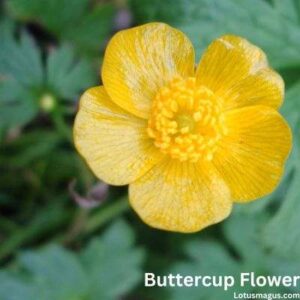
Yellow buttercup flowers symbolize pleasure, happiness, enthusiasm, joy, brotherhood, and friendship. These are often presented as gifts to show gratitude for a friend or loved one. A joyous event like a graduation or birthday calls for yellow buttercups.
Red buttercup flower meaning
Red buttercup flowers symbolize Romance, love, Marriage, tenderness, emotion and passion. They may be used to communicate strong feelings, as well as yearning or desire. Red buttercups are ideal for commemorating important events like anniversaries or Valentine’s Day.
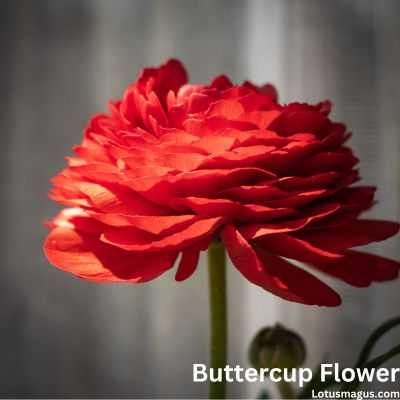
Lavender buttercup flower meaning
Lavender buttercup flowers symbolize grace, elegance, charm, sophistication, beauty and refinement. These may be presented as a gift to show someone you appreciate their elegance or attractiveness. For commemorating a special occasion like a wedding or anniversary, lavender buttercups are ideal.
Buttercup Flower Physical Appearance
Physical appearance of buttercup flower has 5 to 7 glossy yellow petals that are about 1 inch diameter, giving it a very distinctive physical look. These blooms have five green sepals and are borne on long stems. At the base of the bloom are the sepals, which are green in hue. The buttercup flower’s leaves are likewise distinctively shaped, with the base leaves growing on long stalks and being deeply split into 3 to 7 coarsely lobed segments that radiate from a central point like fingers on a hand. Lower leaves feature more teeth and lobes, whereas top leaves are smaller.
Due to a unique colouring process, the petals of buttercup flowers are often quite glossy, particularly in yellow species. The top of the petal is exceptionally smooth and has many small pores that scatter light in all directions, giving the flower its distinctive sheen.
Buttercups are a diverse group of plants that often have fibrous or tuberous roots, including the tall buttercup and the creeping buttercup. The creeping buttercup may reach a length of 2 feet whereas the tall buttercup can reach a height of 3 feet. Although the single blooms of the creeping buttercup are present, the flowers of the tall buttercup are often solitary or loosely crowded.
Buttercup Flower Habitat
The majority of buttercup species thrive in wet habitats like meadows, pastures, and lawns. Nevertheless, certain buttercup species, like the creeping buttercup, may be found in drier environments including lawns, gardens, and highway medians.
Buttercup flowers require adequate sunshine to develop and appreciate slightly acidic soils. They require wet, rich soils and grow well in pH ranges of 5.5 to 7.0. Because of its thin roots, buttercup blooms may not thrive in compacted or poorly drained soils. For instance, the tall buttercup is a typical weed in pastures, meadows, and along the sides of highways. It may be found in a range of settings, including damp lowlands and lush woods.
Buttercups are climatically suited to temperate areas with sufficient rainfall. While they usually blossom in the spring, blooms may sometimes be seen all summer long, particularly in disturbed regions where the plants are opportunistic colonists. For instance, the blooming plant species known as early buttercup (Ranunculus fascicularis) thrives in open, damp or dry environments including meadows, prairies, and savannas.
Buttercup Flower in Ancient Cultures
During the Persian Empire and Native American tradition, the buttercup flower also played a significant role in myths and stories of love and grief. The buttercup flower is regarded as a lucky flower in several cultures. Since the Middle Ages, diverse civilizations have assigned distinct meanings to the classic yellow buttercups. The buttercup flower is now generally recognized as a symbol of pleasure and happiness.
Several regions of Europe, particularly those in the north, are home to the buttercup flower, which is said to have originated in Greece. The ranunculus (buttercup flower) was used in ancient times for divination to strengthen spiritual ties and impart knowledge. Some people even think a ghost is watching over it.
The buttercup flower is still prized and sought after for its beauty today, and it is often used in gardening and floral arrangements. Buttercups come in a variety of species, such as the meadow buttercup, tall buttercup, and creeping buttercup, each having distinctive traits and growth circumstances.
Buttercup Flower Benefits
The blooming plant known as the buttercup has long been utilized for therapeutic reasons. Despite certain safety concerns, it is being used today for a range of health disorders. Using data from several sources, including RxList, WebMD, Health Benefits Times, Medicinal Herb Info, Botanical.com, Housing.com, NaturalMedicinalHerbs.net, and Wild Food UK, we will examine the health advantages, drawbacks, and applications of buttercup in this response.
Health Benefits:
Buttercup has a range of health benefits, including:
- Pain relief: Buttercup is often used to treat joint pain brought on by diseases like gout and arthritis. It contains anti-inflammatory effects that may lessen swelling and inflammation.
- Nerve Pain Relief: Buttercup is also used to treat nerve discomfort brought on by disorders like sciatica and shingles. It may aid in easing the discomfort and agony brought on by these diseases.
- Skin Problems: Buttercup is used to treat a variety of skin conditions, such as eczema, psoriasis, and blisters. It may aid in the prevention of infections and the calming of the skin because to its antifungal and antibacterial characteristics.
- Bronchitis: Buttercup is used to treat bronchitis, a respiratory ailment that results in inflammation of the airways. It may aid in reducing inflammation and enhancing breathing.
Uses:
There are several applications for buttercup, including:
- Tropical Use: Buttercup may be administered topically to the skin to reduce pain and swelling.
- Oral Use: Buttercup may be used orally as a tea or tincture to treat a variety of medical conditions.
- Inhalation: Buttercup may be breathed as steam to treat respiratory conditions including bronchitis.
Side Effects:
Although buttercup provides several health advantages, there are a few negative aspects to be aware of. These include:
- Skin Irritation: When used directly to the skin, buttercup might irritate the skin. Before used, it must be diluted.
- Toxicity: Buttercup is poisonous if consumed in big quantities. Only a medical expert should use it.
- Allergic Reactions: Some individuals may have an allergic response to buttercup. Stop taking it right away and get medical help if you develop any side effects, such as swelling or itching.
In conclusion, buttercup is a plant that has a variety of health advantages, such as pain reduction, relief from nerve discomfort, and therapy for skin issues. But, it’s crucial to use it under a doctor’s supervision and to be aware of any possible negative effects.
Interesting facts about Buttercup Flower
Here are some interesting facts about buttercups:
- One of the most widespread wildflowers, buttercups are noticeable for their vivid yellow blossoms.
- Buttercups come in more than 400 different species, and they are widespread.
- Buttercup petals are unique, particularly the yellow variety because they have a bright, reflecting surface that may make them look sparkly.
- Buttercups have long been used medicinally in addition to being aesthetically pleasing. Dried petals were used to sore throats and bodily pains in ancient medicine.
- Buttercups are robust plants that can thrive in a variety of habitats, from dry meadows to swamps, despite their fragile look.
- Five petals make up the cup-shaped blooms of buttercups, which are typically brilliant yellow, but some species also have orange, red, and white flowers.
- Because of how much their vivid yellow blossoms resemble a butter pat, buttercups get their common name.
- Buttercups are linked to myth and folklore in certain civilizations. Holding a buttercup beneath your chin is thought to indicate whether or not you like butter in Irish mythology.
- Buttercups are poisonous to animals, particularly cattle, and may have a major negative impact on health.
- The bulbous buttercup, or Ranunculus bulbosus, is particularly good for joints that are suffering from gout and rheumatism. The herb helps lessen joint discomfort when applied straight to the skin.
References:
https://simple.wikipedia.org/wiki/Buttercup
https://equine.ca.uky.edu/index.php/content/tenacity-buttercup
http://www.misin.msu.edu/facts/detail/?project=misin&id=140&cname=Tall%20buttercup
Buttercup Flower Myths
The earliest myths involving buttercups flower is about a miser who was punished for not giving his gold coins to fairies while passing through a meadow one day. The fairies cursed him as a consequence, turning all of his wealth into buttercups. The second instance of buttercup-related legend involves a cow. Buttercups were thought to yield the tastiest milk when cows grazed on them, which is how the flower came to represent luck and wealth.
The ranunculus family, which includes the buttercup flower, has a poison known as ranunculin. The buttercup plant’s flowers and leaves might make you throw up and get dermatitis if you eat them fresh. Nonetheless, the plant’s crushed petals and leaves were employed as a sedative and as a headache remedy in ancient societies. For diarrhea, even the roots have been infused.
The buttercup flower is still a favorite for gardens and floral arrangements despite its toxicity. The flower represents aspiration, fond childhood memories, and self-worth. Latin-derived ranunculus is a diminutive of rana, which means frog. Its term is said to have come from the fact that buttercup flowers often bloom in damp environments that are connected to frog habitats.
According to Greek mythology, Aphrodite, the goddess of love and beauty, is said to have created the buttercup when she wept over the loss of her beloved, Adonis. Similar to how the sun is connected to the buttercup in Iranian culture, which is seen as a representation of warmth and love.
The buttercup flower has come to symbolize many other things in contemporary culture, including cleanliness and neatness, childlikeness, stability, grounding, support, joy, happiness, vitality, and good energy. The flower is a symbol of joy, a nod to childhood, and the value of savoring the little things.
Buttercup Flower Spiritual meaning
The spiritual meaning of the buttercup flower is often linked to youth, joy, neatness, humility, and attractiveness. This could be as a result of the flower’s vivid yellow hue and fragile petals, which are symbolic of a child’s joyous attitude and lively disposition. Another factor contributing to the flower’s reputation as having potent spiritual qualities is its capacity to elevate one’s mood.
The buttercup was one of several flowers that humans in the past used as symbols to transmit meaning. Buttercup flowers were utilized as a symbol of pleasure, enthusiasm, and youth. The flower was used in ancient medicine to cure a variety of illnesses since it was thought to have curative characteristics. The buttercup was revered as a symbol of optimism and good fortune that would energize its owner.
Childhood associations with the buttercup flower are among its most important spiritual implications. The flower conjures up memories of a period when life was easy and carefree and symbolizes the purity and innocence of children. It is a well-liked present for young children because to its link to childhood, which serves to remind them of their fun and joyous nature.
Other spiritual connotations connected to the buttercup are neatness and orderliness. A well-organized and well-maintained lifestyle is reflected in the flower’s crisp lines and delicate petals, which stand for cleanliness and order. As a consequence, those who respect cleanliness, orderliness, and organization often get the buttercup as a gift.
Humility is another another symbolism associated with the buttercup flower. The buttercup’s delicate petals serve as a reminder that even the most frail and delicate things in life can be beautiful and joyful. The flower tells us to be humble in our everyday lives and to appreciate the little things in life.
Buttercup Flower in Literature
The buttercup flower has appeared in a number of literary works, notably William Goldman’s “The Princess Bride,” where the character Buttercup is named after the flower. In the novel, Buttercup is portrayed as a beautiful, kind-hearted lady who attracts several suitors.
L.M. Montgomery’s “Anne of Green Gables” The buttercup is referred to as “friendly” by Anne Shirley in Montgomery, which furthers the flower’s association with friendliness. Similar to this, Toad from Kenneth Grahame’s “The Wind in the Willows” sings a song on the benefits of spring, such as the “golden buttercups” that adorn the meadow.
Poetry also makes use of the buttercup bloom; one example is Tracie Kaska’s poem “The Lovely Buttercup.” The poem expresses admiration and astonishment for the natural world by describing the flower’s beauty and delicate nature.
Buttercup Flower in Film and Television
In numerous ways, the buttercup flower has appeared in movies and television shows. Buttercup, a character in “The Princess Bride,” is called after the flower because she is seen as a kind and lovely lady. In “The Wind in the Willows,” Toad sings a song on the pleasures of spring, particularly the “golden buttercups” that adorn the meadow. Here is another place where the flower is mentioned.
The buttercup has been researched for its distinctive visual characteristics in addition to its cultural value. Functional Optics of Glossy Buttercup Flowers has a paper that discusses the interaction between the flower’s pigmented thin-film reflector and its underlying, heavily scattering starch. Scientists and artists alike have been drawn to the flower’s glossy and vivid look, which is caused by this.
Moreover, scientific study has also been conducted on the buttercup. The National Institutes of Health (NIH) investigated the mechanisms behind the buttercup’s brilliant yellow petals. It was discovered that the flower’s vivid yellow sheen is a consequence of previously undiscovered colored thin layers.
The significance and special qualities of the buttercup have often been referred to in popular culture. One of the major characters in “Powerpuff Girls” is called Buttercup, while Jesse Pinkman from “Breaking Bad” makes allusion to the toxic nature of the flower. The buttercup’s inclusion in popular culture serves as a reminder of its importance and contribution to both science and art.
Buttercup Flower Care and Maintenance
Here are some ways to care for buttercups:
- Buttercups need wet soil to thrive correctly, so water them often. Regularly water your buttercup plants, particularly in dry weather. Keep in mind that overwatering them might cause root rot.
- Mulch and Fertilize: To give your plants the nutrients they need to flourish, fertilize them with compost or an all-purpose fertilizer. Mulch the soil surrounding the plants as well to aid with moisture retention and weed control.
- Remove Old Blossoms: Deadhead your plants by routinely removing the old flowers. This will aid in promoting additional blooms and preserving the plant’s look.
- After blooming, stop watering since buttercup flowers are dormant throughout the summer and don’t need much moisture. After flowering, water less often since too much water might cause the plant to decay.
- Buttercup flowers may be cultivated as annuals or perennials, so you can choose to remove them or leave them in the ground. If you wish to leave them in the ground, just trim back the foliage after they bloom and wait for them to blossom again the following year. Instead, you may dig up the tubers and keep them in a cold, dry location until the next growth season.
- Replant the Tubers: If you elect to dig up the tubers, you may transplant them in the autumn for spring blossoming. Be careful to plant them with the pointed end facing up in well-drained soil.
- Buttercup flowers are prone to aphids, slugs, and snails, therefore it’s important to protect the plants from these pests. Aphids may be controlled with neem oil or insecticidal soap, while slugs and snails can be manually removed. Avoid growing your buttercup flowers in places with poor drainage as this might result in fungus illnesses.
Conclusion
I hope you get the answer on “Buttercup Flower Meaning” and as you have learned buttercup flowers are a beautiful and vibrant flower that have captured the hearts of many people around the world. They hold different meanings and symbolism in various cultures, ranging from happiness and joy to jealousy and ingratitude. Whether you’re using them for decorative purposes or to convey a specific message, it’s important to understand the symbolism behind these charming flowers. We hope this blog post has provided you with valuable insight into the meaning and symbolism of buttercup flowers.
Also Read similar posts that interests you:
Blue Rose Meaning And Symbolism – Know Everything
Petunia Flower Meaning And Symbolism – Know Everything
Monstera Plant Meaning And Symbolism – Know Everything
Orchid Plant Meaning and Symbolism – All You Need to Know
